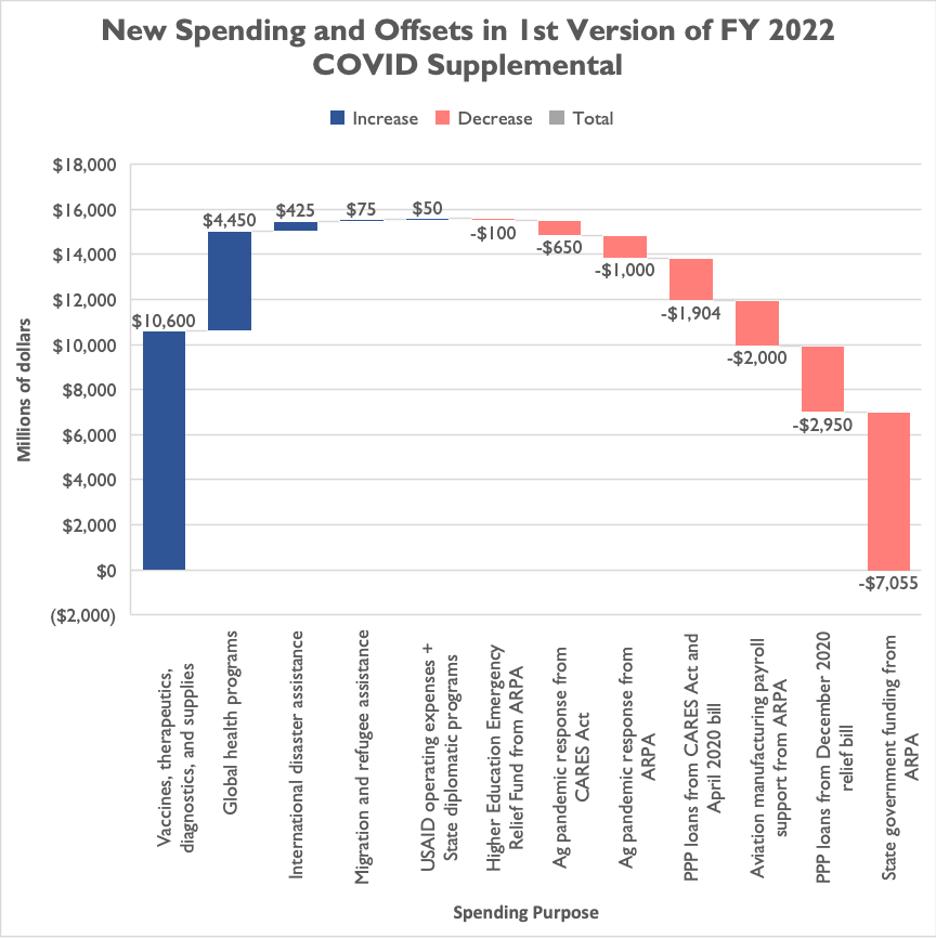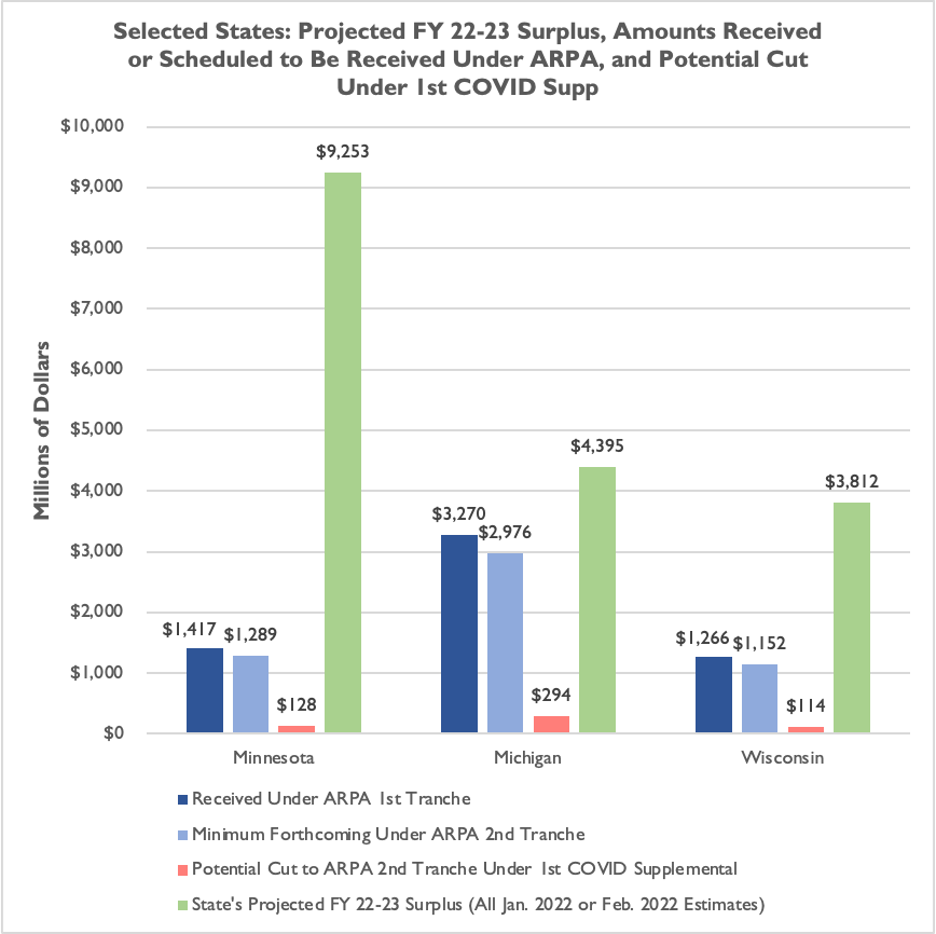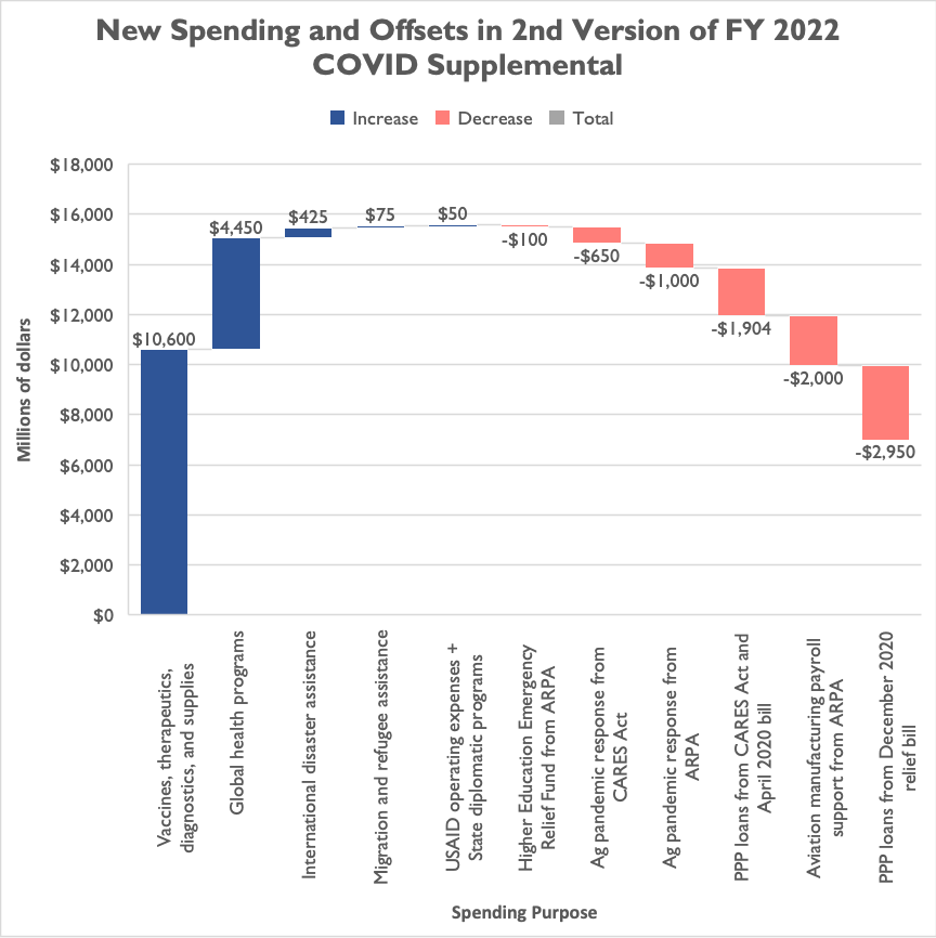On Wednesday, the U.S. House passed an omnibus appropriations bill that should fulfill lawmakers’ discretionary spending responsibilities for the current fiscal year (albeit nearly six months after the start of the fiscal year). They also passed a more than $13 billion supplemental spending bill to support Ukraine as Russia invades the country. And lawmakers tried to pass a nearly $16 billion supplemental spending bill to address the ongoing public health response to the COVID-19 pandemic, but failed after some House Democrats raised objections to negotiators’ efforts to actually pay for the COVID supplemental.
That the Biden administration and Congressional Democrats agreed to try to pay for the COVID supplemental at all was somewhat surprising. The administration and their allies in Congress have not been shy about running up debt and deficits. Reportedly, Republican lawmakers – whose votes Democrats needed to pass a spending bill in the Senate – insisted on fully offsetting the $15.6 billion Biden administration request. This is the proper way for Congress to budget for urgent needs and NTU applauded the move.[1]
Our read of the COVID supplemental text even indicated that the proposed offsets – from unspent CARES Act, American Rescue Plan Act (ARPA), and other COVID-19 relief funds – would slightly reduce deficits, by a miniscule but not meaningless $59 million.
The waterfall chart below demonstrates the new proposed spending and offsets in this version of the COVID supplemental:

As noted above, the largest offset by far was cuts to state government funding from ARPA. The first version of the COVID supplemental would have cut about $7 billion. NTU has long argued that the nearly $200 billion that went to state governments under ARPA was a wasteful and poor use of deficit-financed dollars.
Unfortunately, this tiny amount of fiscal discipline exhibited by Congress lasted all of 16 hours.
The morning after Congressional leadership announced the omnibus and supplemental spending deal, a few Congressional Democrats from midwestern states started howling about the state funding offsets.
Rep. Angie Craig (D-MN) said the offsets were “completely unacceptable.” Rep. Debbie Dingell (D-MI) claimed her state and others were “being picked on.” Rep. Mark Pocan (D-WI) raised objections as well, and Rep. Cori Bush (D-MO) claimed the offsets would “snatch back … lifesaving resources” from her state.
The reaction from Reps. Craig, Dingell, Pocan, and Bush – representing Minnesota, Michigan, Wisconsin, and Missouri, respectively – would suggest that “lifesaving” resources were on the line with the proposed state funding cuts. A quick look at the current fiscal outlook for each of these Members’ states, though, reveals that the cuts in ARPA funding these states would have faced under the original COVID supplemental deal pale in comparison to the budget surpluses these states expect to run in the current biennium.

In response to the backlash, Speaker Nancy Pelosi (D-CA) pointed the finger at Republicans in a “Dear Colleague” letter to other House members:
“Working with the Administration, Democrats were able to negotiate $15 billion in COVID support to fulfill the President's urgently needed request. To offset these costs and ensure the omnibus will be enacted, the Administration identified $8 billion from the American Rescue Plan programs that have expired with remaining funds available. Democrats were also able to ensure that the remaining payments to localities received no cuts in funding. Republicans continued to insist on state cuts, but we were able to ensure that all states receive at least 91 percent of the state funds that they expected to receive.”[2]
Based on Speaker Pelosi’s claim in her “Dear Colleague” letter that states would retain 91 percent of the funding from their second tranche of ARPA dollars, NTU estimates that each of the four states cited above would see cuts to federal aid of between $114 million and $294 million under the original agreement. Each state is also on track to run multi-billion dollar surpluses in the current two-year budget window, based on projections in the past three months.
Though NTU could not find up-to-date surplus information for Missouri, and thus does not include Missouri in the above chart, Gov. Mike Parson (R-MO) recently projected record revenues and billion-dollar surpluses for the state. On November 30, 2021, general revenue balances in Missouri “stood at $2.5 billion … eight times larger than the average balance on Nov. 30 from 2013 through 2019.”
Speaker Pelosi and House Appropriations Chair Rosa DeLauro (D-CT) announced they would remove the COVID supplemental from the omnibus spending bill, and hold a vote next week on a new COVID supplemental that removes the state funding offsets.
Below is a waterfall chart for the spending and offsets in the newly proposed COVID supplemental:

As the chart demonstrates, there’s now a hole in the COVID supplemental between the new spending commitments and the offsets. That $7 billion hole will be financed by new deficit spending, which will one day have to be repaid by American taxpayers (with interest).
In other words, responsible offsets to supplemental COVID funding were canceled because lawmakers couldn’t stand to see their states lose appropriated but undisbursed funding that makes up a mere fraction of their states’ projected surpluses.
If this is how Congress treats an extremely modest effort to instill fiscal discipline in the Congressional budget process, then chances of ever reducing the nation’s debt and deficits are very low indeed.
[1] We also expressed our disappointment that lawmakers did not offset supplemental spending for Ukraine. Even a $13 billion reduction in the FY 2022 increase to Department of Defense (DoD) appropriations – already receiving a $32.5-billion plus-up relative to FY 2021 enacted levels – would have been better than not offsetting the supplemental spending at all.
[2] A separate but important question is just how much in COVID relief funds are “expired with remaining funds available.” The Biden administration apparently did not offer up the $8 billion in ARPA programs as an offset without Republicans demanding offsets on the COVID supplemental package. To the extent possible, lawmakers should demand a full accounting of expired but unobligated funds from ARPA, CARES, and other COVID relief bills, and should require that money be returned to the Treasury Department for deficit reduction.

